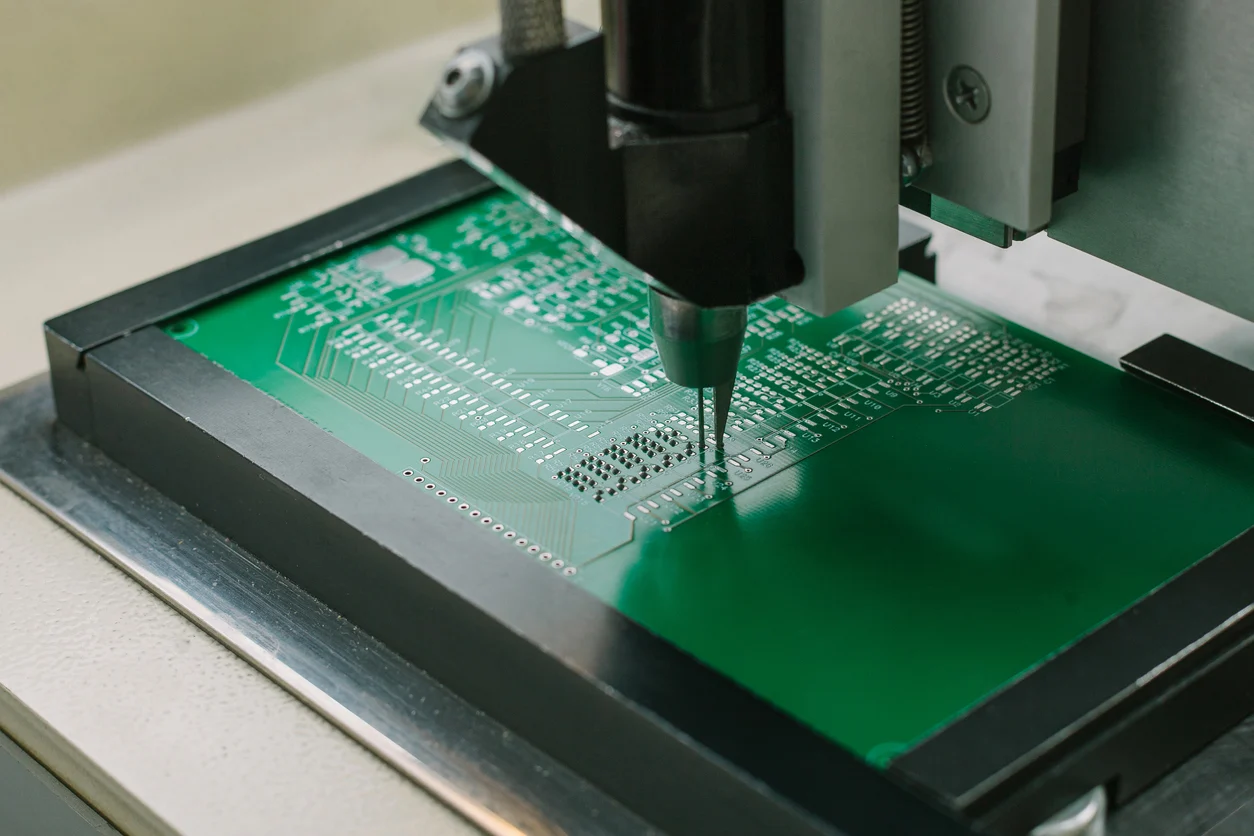Radio frequency (RF) and microwave printed circuit boards (PCBs) play an essential role in enabling high frequency communications used in wireless infrastructure, radar, satellite, aerospace/defense, and other demanding applications. Manufacturing these specialized boards requires expertise in fabrication processes and materials tailored to provide tightly controlled electrical performance at microwave frequencies.
This article explores the top 10 manufacturers of high-quality RF/microwave PCBs serving the radio frequency industry globally. We analyze their technical capabilities, expertise, certifications, and experience delivering exceptional RF PCBs optimized for electrical performance and reliability.
Top 10 RF and Microwave PCB Manufacturers
1. RayMing Technology
RayMing is a leading global PCB manufacturer with specialized capabilities producing advanced RF and microwave PCBs up to 77 GHz.
Technical Capabilities
- Frequency range up to 77 GHz
- Materials including Rogers, Taconic, Polyimide
- Stackups with 40+ layers
- 2 mil line width and space
- Blind and buried vias
- Panel size up to 24 x 30 inches
- Quick-turn prototypes in 5 days
Quality Certifications
- IPC 6012 Class 3, IPC-4101, IPC-2226
- ISO 9001 and AS9100 certified
- UL recognition
Microwave Expertise
20+ years focused on RF and microwave PCBs. Extensive experience serving aerospace, satellite, defense, and telecom industries requiring high frequency boards.
Why RayMing?
RayMing provides top quality RF PCBs up to microwave frequencies leveraging optimized fabrication processes and close customer collaboration to ensure electrical performance and reliability.
2. Lenthor Engineering
Florida-based Lenthor Engineering has over 25 years of expertise designing and manufacturing RF/microwave PCBs for specialized applications from DC to 50 GHz.
Technical Capabilities
- Frequencies up to 50 GHz
- Materials including Rogers, Taconic, Arlon
- Stackups up to 60 layers
- 2 to 4 mil line width/space
- Blind and buried vias
- Panel size up to 18 x 24 inches
- Quick-turn prototypes in 5-7 days
Quality Certifications
- IPC 6012 Class 2 and 3
- ISO 9001:2015 certified
- ITAR registered
Microwave Expertise
Long history serving aerospace, satellite, wireless infrastructure, and auto radar customers with technically challenging RF PCB needs.
Why Lenthor?
Lenthor leverages deep RF/microwave expertise to deliver high-performance boards optimized for electrical function and reliability.
3. Times Microwave
With over 50 years of experience, Times Microwave specializes in producing high reliability PCBs and cable assemblies for demanding RF applications.
Technical Capabilities
- Frequencies up to 77 GHz
- Microwave laminates including PTFE composites
- Stackups up to 32 layers
- Multilayer blind vias
- Panel size up to 24 x 18 inches
- Quick-turn prototypes in 5-7 days
Quality Certifications
- AS9100 and ISO 9001 certified
- ITAR Compliant
Microwave Expertise
Extensive expertise in commercial and military aerospace, satellites, telecom infrastructure and other microwave applications.
Why Times Microwave?
Times Microwave produces complex, high performance RF PCBs where reliability and electrical performance are critical.
4. TTM Technologies
TTM is a large tier 1 PCB manufacturer providing specialized RF and microwave PCB fabrication globally.
Technical Capabilities
- Frequency range up to 65+ GHz
- Materials including ceramic, quartz, LCP
- Buildup layers up to 30 layers
- 2 mil line width and space
- Blind and buried vias
- Panel size up to 23 x 29 inches
- NPI in 5 days, production lead time 1-2 weeks
Quality Certifications
- IPC 6012 Class 2 and 3
- AS9100 and ISO 9001 certified
- ITAR registered, UL listed
Microwave Expertise
Substantial expertise in aerospace and defense programs requiring high-performance RF/microwave PCBs.
Why TTM?
TTM brings tier 1 technical capabilities and global footprint to deliver demanding microwave PCBs from prototype through high volume production.
5. Compeq Manufacturing
Taiwan-based Compeq is a major PCB manufacturer providing specialized RF boards up to 77 GHz supporting telecom, networking, and aerospace applications.
Technical Capabilities
- Frequencies up to 77 GHz
- Materials including Rogers, Taconic, Isola
- Buildup with 28+ layers
- 2 mil line width/space
- Microvias and blind/buried vias
- Panel size up to 510mm x 508mm
- Quick-turn prototypes in 3 days
Quality Certifications
- IPC 6012 Class 3 quality
- ISO 9001 certified
- UL Certified
Microwave Expertise
Extensive experience manufacturing complex RF boards for 5G wireless infrastructure and advanced driver assistance (ADAS) automotive radar.
Why Compeq?
Compeq delivers high layer count, tight tolerance RF PCBs leveraging advanced manufacturing capabilities tailor-made for microwave frequencies.
6. Epectec
Epectec manufactures specialized high frequency PCBs optimized for aerospace, defense, satellite, and other demanding applications up to 50 GHz.
Technical Capabilities
- Frequency range up to 50 GHz
- Materials including Rogers, Taconic, Isola
- Buildup up to 30 layers
- 2 mil line width/space
- Microvias and blind/buried vias
- Panel size up to 18 x 24 inches
- Quick-turn prototypes in 5-7 days
Quality Certifications
- AS9100 and ISO 9001 certified
- IPC 6012 Class 3
- ITAR registered
Microwave Expertise
Strong expertise in demanding defense and aerospace RF applications requiring high reliability and electrical performance.
Why Epectec?
Epectec provides advanced RF PCBs where high frequency electrical performance and reliability are paramount.
7. ALL CIRCUITS
All Circuits has over 25 years specialized expertise designing and fabricating RF and microwave PCBs up to 65 GHz supporting defense and commercial applications.
Technical Capabilities
- Frequency range up to 65 GHz
- Materials including Rogers, Arlon, Taconic
- Buildup with 16-24 layers
- 4 mil line width/space
- Blind and buried vias
- Panel size up to 24 x 36 inches
- Quick-turn prototypes in 5-7 days
Quality Certifications
- IPC 6012 Class 2 and 3
- ISO 9001:2015 certified
- ITAR Registered
Microwave Expertise
Substantial expertise developing complex RF solutions for phased array radar, satellite communications, and other high frequency applications.
Why All Circuits?
All Circuits provides advanced RF PCBs where electrical performance and quality are critical, leveraging decades of microwave expertise.
8. Teledyne Technologies
Teledyne offers specialty microwave PCBs and hybrid circuits optimized for high power space, defense, and aerospace applications up to Q-band.
Technical Capabilities
- Frequencies up to 40 GHz
- Materials including PTFE composites
- Buildup up to 32 layers
- 4+ mil line width/space
- Plated through holes and blind vias
- Panel size up to 22 x 25 inches
- Quick-turn prototypes in 10 days
Quality Certifications
- IPC 6012 Class 2 and 3
- ISO 9001 and AS9100 certified
Microwave Expertise
Decades focused on high reliability microwave PCBs and hybrids for satellite, radar, and defense programs with demanding electrical and power requirements.
Why Teledyne?
Teledyne provides high power, high frequency PCBs leveraging substrate expertise and a vertically integrated U.S. based supply chain.
9. Hughes Circuits
Hughes Circuits offers quick-turn prototype and low rate initial production (LRIP) of high performance RF/microwave PCBs optimized for aerospace and defense.
Technical Capabilities
- Frequency range up to 40 GHz
- Materials including Rogers, Taconic, Isola
- Buildup up to 28 layers
- 4 mil line width/space
- Buried and blind vias
- Panel size up to 24 x 36 inches
- Quick-turn prototypes in 5 days
Quality Certifications
- IPC 6012 Class 2 and 3
- ISO 9001:2015 certified
- ITAR registered
Microwave Expertise
Specialized expertise in short run, high performance microwave PCBs meeting demanding requirements for aerospace and defense programs.
Why Hughes Circuits?
Hughes Circuits provides rapid prototyping and LRIP ability for specialized RF PCB requirements up to 40 GHz.
10. Elite Material
China-based Elite Material offers high volume production of quality RF PCBs leveraging advanced manufacturing capabilities and processes.
Technical Capabilities
- Frequency range up to 25 GHz
- Materials including Rogers 4350, Taconic
- Buildup up to 36 layers
- 2 mil line width/space
- Flexible and rigid-flex
- Panel size up to 715mm x 610mm
- Low rate initial production in 5 days
Quality Certifications
- IPC 6012 Class 2 and 3
- ISO 9001 certified
Microwave Expertise
Volume manufacturing expertise tailored for wireless networking gear and other commercial RF electronics applications.
Why Elite Material?
Elite Material provides reliable, high volume RF PCB fabrication leveraging state-of-the-art manufacturing technologies and robust quality processes.
RF PCB Technology and Materials Overview
Successfully producing PCBs for radio frequency and microwave applications requires certain fabrication technologies and capabilities tailored for high frequency performance. Here is an overview of key RF PCB attributes manufacturers must master:
Tight Tolerances – Microwave circuits require extremely tight impedance tolerances to prevent signal reflections/losses. This demands strict process controls and dimensional repeatability.
Controlled Impedance – FR-4 material is lossy above several GHz. RF PCBs utilize low-loss microwave dielectrics like Rogers, Taconic, and ceramic-filled PTFE.
High Layer Count – High frequency signals require more layers for proper impedance control and to isolate noisy digital signals. RF boards often have 20-50+ layers.
HDI Technology – High density interconnect with microvias helps route high speed signals cleanly without stubs.Also reduces via parasitics.
Fine Features – Narrow 2 mil traces and spaces are common for matching transmission line impedances.
Proper finishes – Immersion silver or ENIG are used for RF versus HASL for lower frequency boards.
Plating integrity – Strong attention to plating quality and reliability ensures the plating holds up across millions of vias and holes.
Test expertise – Extensive validation of electrical performance, impedance, attenuation, crosstalk, and propagation delay.
Microwave circuitry demands tight process execution and collaboration between designers and manufacturers to achieve stringent RF performance requirements.
Key Factors for Selecting an RF PCB Manufacturer
Choosing the right partner is critical to ensure RF boards deliver required functionality and reliability. Key selection criteria include:
Technical Capabilities – Evaluate line width/spacing, layer count, materials, platings, via structures, and lamination capabilities to ensure they meet circuit requirements.
Certifications – Leading manufacturers follow IPC 6012 quality standards. Many are ISO 9001 and AS9100 certified demonstrating stringent quality control.
Microwave Experience – Look for expertise explicitly in RF/microwave boards – not just standard PCB fabrication.
Testing and Metrology – RF testing expertise and measurement tools like TDR/TDT for impedance, network analyzers to characterize attenuation, crosstalk, propagation delay and frequency response.
Quality Focus -Consistency and repeatability matter greatly for RF boards. Look for rigorous quality focus at every fabrication step.
Prototyping Agility – The ability to quickly iterate prototypes is key during RF circuit development. Fast-turnaround helps greatly.
Design Collaboration – Partners should engage early to advise on material selection, stack planning, and design refinements to ensure manufacturability and performance.
Selecting a manufacturer with proven RF expertise and capabilities tailored to high frequencies gives the best chance for microwave PCB success.
Frequently Asked Questions
What are key differences between RF PCBs and standard PCBs?
Key differences between RF PCBs and standard PCBs include:
- Tighter impedance tolerances – RF often 5-10% vs. 10-30% for digital PCBs
- Controlled dielectric materials – Low loss microwave substrates instead of FR-4
- Higher layer counts – 20+ layers helps isolate and route RF signals
- Thinner dielectrics – Thin laminates enhance performance at high frequencies
- Tighter thickness tolerances – Consistency important for impedance control
- Finer features – Narrow traces and clearances for controlled impedances
- Minimized stubs – Stubs cause impedance discontinuities and reflection
- Advanced testing – More extensive electrical performance validation required
What types of materials are used for RF and microwave PCBs?
Common materials for RF/microwave PCBs include:
- Ceramic filled PTFE composites – High performance up to mmWave frequencies
- Woven glass reinforced PTFE – Excellent microwave performance for low loss
- Thermoset microwave laminates (Rogers RO4000® series, Taconic TLYTM, Isola IS680) – Stable electrical properties up to ~50 GHz
- PPE and liquid crystal polymer (LCP) films – Suited for flexible RF circuits
The optimal material depends on electrical, thermal, frequency, and cost requirements.
What are key challenges when manufacturing RF PCBs?
Some of the key challenges with RF PCB fabrication include:
- Achieving consistently tight dimensional tolerances and stable dielectric constants
- Minimizing thickness variation and maintaining highly parallel innerlayers
- Developing highly accurate impedance profiles without discontinuities
- Executing sequential lamination without damaging fine features
- Achieving high via reliability with 20+ layer stackups
- Eliminating signal losses, reflections, and crosstalk
- Testing thoroughly to validate phase response and attenuation
- Effectively isolating digital circuits from RF circuitry
- Controlling process variability for repeatability
- Managing substantial NRE costs and long cycle times
Microwave PCBs demand advanced fabrication expertise and precision to overcome these inherent challenges.
What design considerations help maximize RF PCB performance?
Key design guidelines for maximizing RF PCB performance:
- Match transmission line impedances to minimize reflections
- Minimize vias and route top layer whenever possible – vias introduce inductance and parasitics
- Avoid 90° angles – use rounded angles and teardrops to prevent reflections
- Use slow transitions between different trace widths – abrupt changes cause reflections
- Use coplanar waveguides for isolation from ground layers rather than microstrip lines
- Use a ground flood fill for isolation and reduced emissions
- Minimize crossover between signal layers to reduce crosstalk
Close collaboration between designers and manufacturers is vital to optimize RF PCB layout.
What are key benefits of using substrates like LCP for RF designs?
Benefits of liquid crystal polymer (LCP) substrates for RF designs:
- Extremely stable electrical properties over temperature
- Low dielectric loss tangent for excellent high frequency performance
- Tight control over dielectric layer thickness
- Allows flexible circuits to be manufactured
- Excellent thermal performance for power handling
- Withstands solder reflow temperatures up to 288°C
- Superior chemical resistance
The stable electrical properties and flexibility make LCP an exceptional choice for advanced RF circuit designs, especially in harsh environments.


